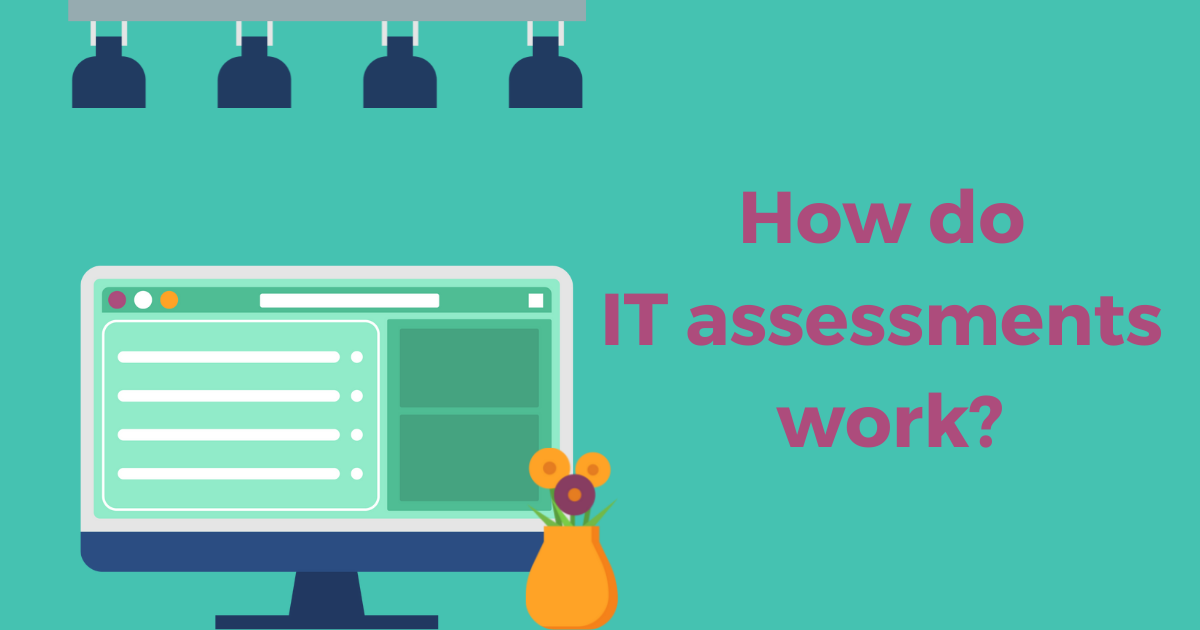How do IT assessments work?

Assessments are a crucial tool for understanding how well your data, technology and IT resources are functioning for your organization. One question we get a lot is, “how does the assessment process work?”
To help answer that question, we put together this short guide to IT assessments from Cimatri. If you’ve never done an IT assessment at your organization before, here’s a quick look at how we do it.
But first, let’s briefly touch on what might motivate you to seek out an assessment from us.
Why do an IT assessment?
Easy answer: you don’t know what you don’t know.
When an organization approaches Cimatri about conducting an assessment, there are a few common pain points.
- The organization knows there is something “off” about the way things are working but they can’t determine exactly what.
- Business goals are not being met due to barriers with the technology the organization is using.
- The Board wants to know what’s driving expenses in a succinct, understandable way that is data-driven, not anecdotal or opinion.
- There are plans for a large IT initiative--- a new AMS, LMS, upgrades, etc.--- that require a look at the bigger picture.
Based on these starting points there are some other relevant questions to ask.
Where are possible pain points in your organization? Is it management of the IT function or an IT staffing issue? Is it a lack of clarity on who “owns” IT? Is it your technology’s alignment with business goals on track? Do you have problems with data (hint: everyone does)? Or do you have good data but aren’t able to get that info into meaningful analytics?
Security is always an important topic and cannot be overlooked. And how many pieces of software do you need to get a business function accomplished?
Our experience tells us there are 9 Core Competencies of Association IT, and we have developed assessments to evaluate each one:
- IT Management
- User Satisfaction
- IT Business Alignment
- IT Staffing Alignment
- Software
- Data Quality
- Analytics Capability
- Security
- Executive Alignment
A data-driven assessment gives you a view into what is really happening in a measurable way that provides actionable opportunities for improvement--- and/or the confidence that the technology and related functions in your organization are aligned with your business goals.
How does the assessment process work?
At Cimatri, our mantra is “People, Process, Technology.” With the variety of IT assessments to choose from, there is plenty of opportunity to drill down into what’s really happening. Here’s how an assessment works.
The people part:
Assessments begin with a survey of the people involved with the technology or its management. Depending on the assessment, your team will need to help with gathering information needed to build the survey, such as a list of all software (including shadow software) used in the organization for the Software Assessment Survey.
Those surveyed may be all staff, senior staff, functional staff, IT staff, or a combination of those, depending on the assessment topic. For topic-specific assessments such as security or data analytics, respondents should have knowledge of policies and processes.
Taking 20 minutes to answer targeted questions with a score and offer comments accomplishes an additional goal: survey respondents feel included in moving towards a solution.
Depending on the assessment and your organization’s calendar, the surveys may be open for a few weeks so that everyone has a chance to weigh in, or, in some cases, answers may be completed by a group in a single session.
The process part:
The assessment scoring is then compiled. For this, Cimatri partners with Info-Tech Research Group, an industry-standard research firm that concentrates on technology--- and the data is presented as a document. These are not one-pagers but full reports rich in detail and information. Depending on the assessment, there will be suggestions embedded on what a score means and how to use that information for improvement.
And how do you interpret the insights gained from the assessment(s)? Cimatri consultants walk you through what the assessment is really telling you, and we can help you develop an actionable plan to address issues that are now clearly defined.
The technology part:
Technology issues are most often not problems with the technology itself, but how it’s used and managed, and its alignment with how you want to achieve your goals. The assessments offered by Cimatri give you a broader picture of what is really going on.
In short, the assessments we offer eliminate the guesswork and move you forward to better use of technology.
Learn more about Cimatri’s assessment offerings in the 9 core areas of competencies for Association IT.



